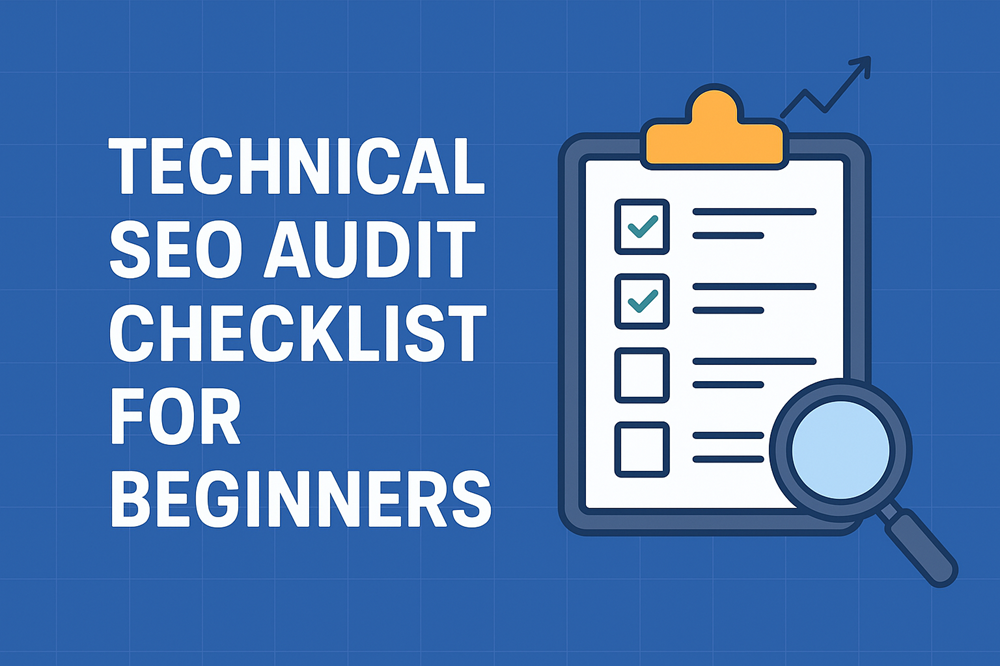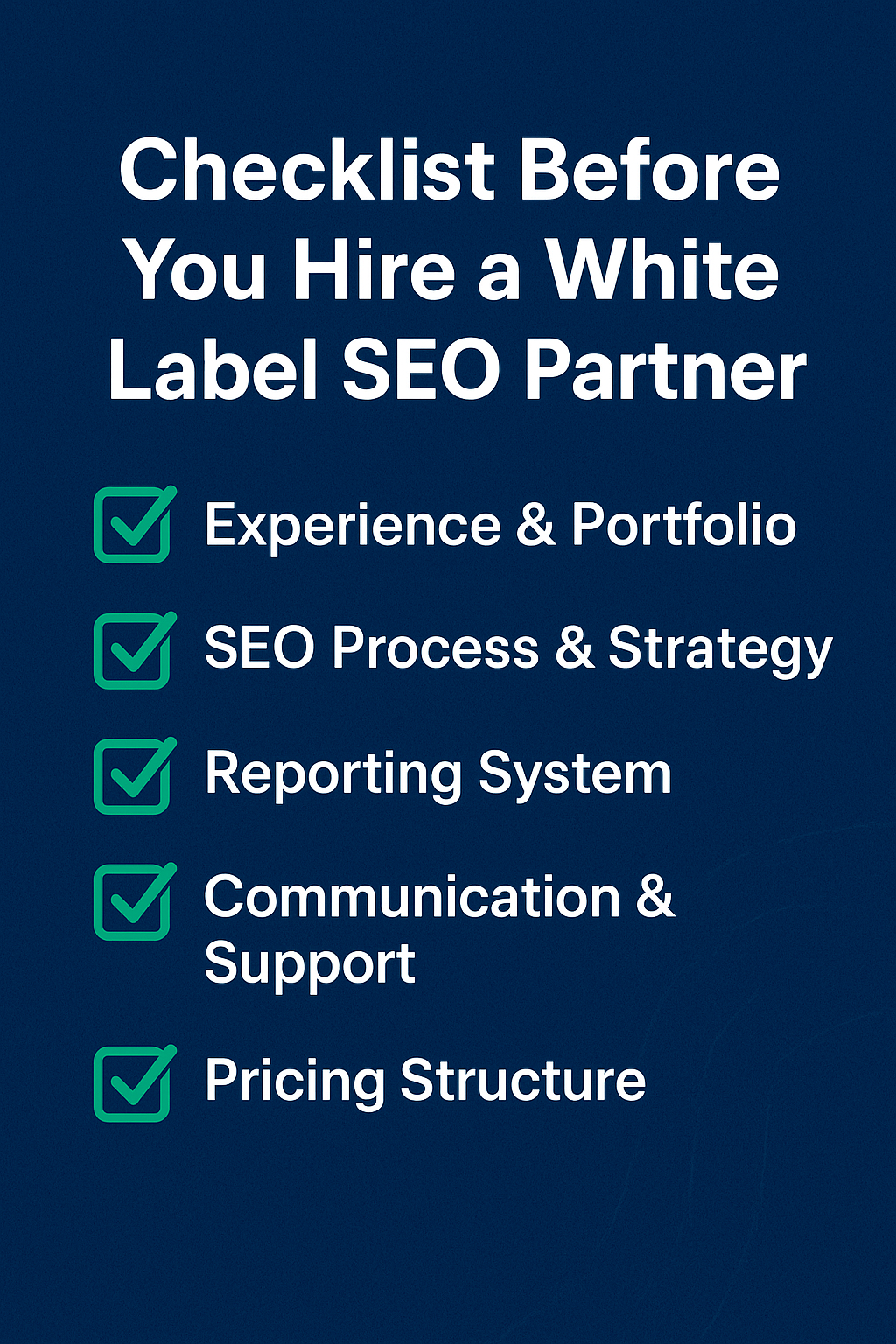When it comes to ranking higher on Google, a Technical SEO Audit is often the foundation that most beginners overlook. While great content and backlinks are essential, search engines first need to crawl, index, and understand your website. If your site has technical issues, even the best content won’t perform as it should.
In this beginner-friendly guide, we’ll walk you through a Technical SEO Audit Checklist for 2025 to help you fix issues, improve site performance, and maximize organic visibility.
What Is a Technical SEO Audit?
A Technical SEO Audit is the process of evaluating your website’s technical health to ensure that search engines can easily crawl, index, and display your pages in search results. It focuses on elements like:
- Website speed and performance
- Mobile-friendliness
- Indexing and crawlability
- Structured data (schema markup)
- Site architecture and internal linking
- HTTPS security
Think of it as tuning up your website’s “engine” so it runs smoothly for both users and search engines.
Why Beginners Need a Technical SEO Audit in 2025
SEO has evolved, and Google’s algorithms are smarter than ever. For beginners, ignoring technical SEO can lead to:
- Pages are not being indexed at all
- Poor user experience due to slow loading speed
- Loss of rankings because of mobile usability issues
- Missed opportunities in search due to a lack of structured data
By using this Technical SEO Audit Checklist, even beginners can identify and fix key issues that prevent websites from ranking well.
Technical SEO Audit Checklist for Beginners
Here’s a step-by-step Technical SEO Audit Checklist (2025 edition) you can follow:
1. Check Website Crawlability
- Use Google Search Console to find crawl errors.
- Ensure your robots.txt file isn’t blocking important pages.
- Create and submit an XML sitemap.
💡 Tip: Tools like Screaming Frog and Sitebulb are excellent for crawling your site.
2. Ensure Proper Indexing
- Use the “site:yourdomain.com” search in Google to see what pages are indexed.
- Check for duplicate content with canonical tags.
- Use the URL Inspection Tool in Search Console to troubleshoot indexing issues.
3. Optimize Website Speed
Google considers speed a ranking factor. Run tests using:
- Google PageSpeed Insights
- GTmetrix
- Lighthouse
Quick fixes include:
- Compressing images
- Using a Content Delivery Network (CDN)
- Enabling browser caching
- Minimizing CSS, JS, and HTML
4. Mobile-Friendliness Matters
Since mobile-first indexing is the norm, test your site with Google’s Mobile-Friendly Test Tool.
- Ensure your site adapts well to different screen sizes.
- Avoid intrusive pop-ups that block content on mobile.
5. Check HTTPS and Security
- Ensure your website runs on HTTPS, not HTTP.
- Fix any “mixed content” warnings (secure + non-secure elements).
- Add an SSL certificate if missing.
6. Review Site Architecture
- Keep URLs clean and keyword-friendly.
- Use breadcrumbs for navigation.
- Maintain a logical structure with categories and subcategories.
7. Optimize Internal Linking
Internal linking strengthens SEO by distributing link equity and improving crawlability.
- Link from high-authority pages to new ones.
- Ensure no orphan pages exist.
- Use descriptive anchor text.
8. Structured Data (Schema Markup)
Schema helps search engines understand your content and improves rich snippets.
- Add schema for articles, products, FAQs, and local businesses.
- Validate with Google’s Rich Results Test.
9. Identify Duplicate Content Issues
- Use canonical tags for similar content.
- Set preferred domains (www vs non-www).
- Check for thin content and consolidate pages where necessary.
10. Monitor Core Web Vitals (CWV)
Google’s Core Web Vitals measure user experience:
- LCP (Largest Contentful Paint): Page load speed
- FID (First Input Delay): Interactivity
- CLS (Cumulative Layout Shift): Visual stability
Improve these by optimizing server response times, using lazy loading, and minimizing JavaScript.
11. Fix Broken Links (404 Errors)
Broken links harm both SEO and user experience.
- Use tools like Ahrefs, Screaming Frog, or SEMrush to identify them.
- Redirect broken URLs with 301 redirects.
12. Optimize for Local SEO (If Applicable)
If you run a local business, ensure:
- Google Business Profile is set up correctly.
- NAP (Name, Address, Phone number) is consistent across directories.
- Add local schema markup.
Tools for Running a Technical SEO Audit
Here are some beginner-friendly tools:
- Google Search Console (free)
- Screaming Frog (freemium)
- Ahrefs Site Audit
- SEMrush Site Audit
- GTmetrix
Common Mistakes Beginners Make in Technical SEO
- Forgetting to update the XML sitemap after adding new pages
- Blocking important pages in robots.txt by mistake
- Ignoring Core Web Vitals
- Overlooking mobile usability issues
- Not monitoring website health regularly
Final Thoughts
For beginners, performing a Technical SEO Audit might feel overwhelming, but following a structured checklist makes it manageable. By fixing crawl errors, speeding up your site, ensuring mobile usability, and optimizing Core Web Vitals, you’ll give your website the strong foundation it needs to rank in 2025 and beyond.
🚀 Ready to get expert help with your SEO? Contact SEO Pro Freelancer today and let’s optimize your site for long-term growth.
FAQs About Technical SEO Audit
Q1. How often should I do a Technical SEO Audit?
At least once every 3–6 months, or whenever you launch major site updates.
Q2. Do I need coding skills for a Technical SEO Audit?
Not necessarily. Many tools simplify the process, but some fixes may require developer support.
Q3. What’s the difference between Technical SEO and On-Page SEO?
Technical SEO focuses on crawlability, indexing, and site structure. On-page SEO focuses on optimizing content and using relevant keywords.
Q4. Is a free SEO audit tool enough for beginners?
Yes, free tools like Google Search Console and Screaming Frog (in a limited version) can help beginners get started.
Q5. Can a Technical SEO Audit improve my rankings immediately?
Some fixes (like fixing broken links or speeding up pages) can show results quickly, while others take weeks as Google re-crawls your site.








